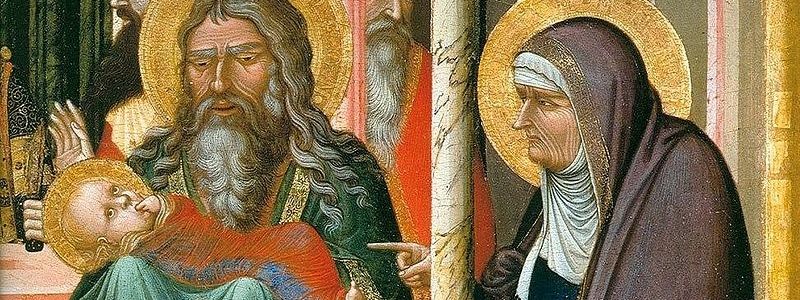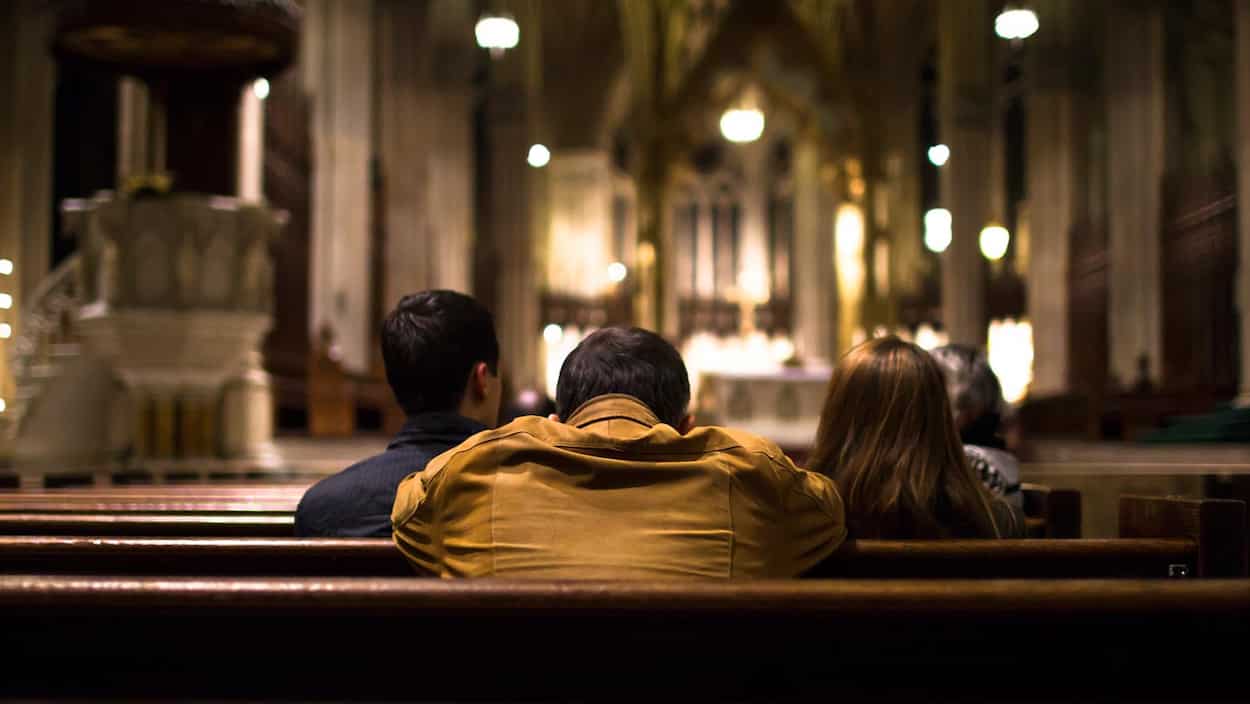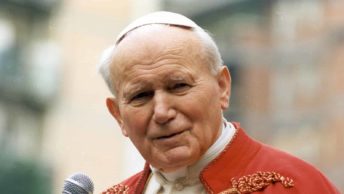
Today we celebrate the Presentation of the Lord in the Temple of Jerusalem, a Feast occurring forty days after the Nativity of Our Lord. In the Eastern Churches it is known as The Encounter and is a continuation of the “coming of the Lord” to us that began at Christmas. It also is known as the Feast of the Purification, the details of which we hear in the Gospel of Luke (2:22-40 ). For the Lord comes to purify everything, not only our human nature but also the Temple, the priesthood, and all that has been tarnished by our sins.
Along with Christmas and Epiphany, the Presentation of the Lord carries the theme of light shining in the darkness. Before God’s power, and when confronted by God’s love, even the darkest of our sins cannot overcome the lovely light of God’s choice to love us and the gift of God’s Word made flesh among us. God’s expression of himself, God’s Word, takes on solidarity with us that is total, universal and complete.
At this point, forty days after Christmas, we turn now to prepare for the forty days of Lent. The two seasons, as you all recognize I’m sure, urge upon us the practice and attitude of giving, gift giving at Christmas and alms giving during Lent. It has to do with giving ourselves to others.
Along with the numbers three and twelve, the number forty has special significance in our Judeo-Christian religious history. When Jesus began His public ministry he went out into the desert and fasted for forty days and forty nights and then was tempted by the Devil. We enter into Lent for forty days before Easter. There are a number of instances in the Bible wherein God made major changes and transformations after a period of forty days.
Noah was in the ark for forty days and forty nights when God purified the world and started over again by re-creating all of the earth’s living creatures. Moses was on the mountain with God for forty days when he received the Ten Commandments. The Israelites spent forty years in the wilderness, one year for each day they journeyed toward the Promised Land.
The importance of religious history cannot be overemphasized. Our Jewish elders in the faith, as well as we Christians, find God and encounter God in our history. Recognizing the actions of God in our history is an important part of recognizing what He has done. We see history and what God is accomplishing by dividing it into significant sections.
The tenth plague inflicted upon Pharaoh and the Egyptians as a result of their refusal to release the Jews from slavery was the most terrible of all of those ten plagues. All of the first-born males of the Egyptians were lost to the Avenging Angels, those angels passing over the dwellings of the Hebrews, dwellings whose doorposts were marked with the blood of the sacrificial lamb. In gratitude and in thanksgiving, from thence forward Jewish parents dedicated their first-born sons to God by presenting them in the Temple.
And so we find Mary and Joseph presenting their first-born to God in the Temple, fulfilling thereby the religious laws of their forbearers. These dedications of their first-born sons were done forty days after their birth in commemoration of the forty years the Jews sojourned in the desert before they entered the Promised Land.
As in so many other instances, Mary’s nurturing of Jesus throughout His infancy and early life, Mary’s finding him in the Temple when He was twelve, being with him during His terrible trial, passion and death, and lastly with her presence among the Twelve at Pentecost, Mary (who symbolizes all believers) is silently present. No words of hers are reported.
Inspired Simeon and Anna the prophetess do, however, speak. This, after all, is the critical juncture between the Old and New Testaments. Simeon and Anna, both old, both devout, and both inspired, receive the Child with eager welcome and then hand the Child over to Mary. Amidst words of prophecy, praise and thanksgiving, the Old hands over the Messiah to the New.
There is another movement in this great divine symphony, namely the movement from Christmas to Easter. The Light of the World, prefaced by the movement of the Star of Bethlehem will become the light of the Easter Candle. Born in the middle of the night at Bethlehem, God’s Word made flesh will rise in redeeming Resurrection at dawn’s early light on Easter.
From the beginning Mary was there. At the end Mary under the Cross was there, silently “keeping all of these things in heart” and pondering what they might mean. Throughout it all she is a model for us. In her quiet humility and openness to whatever God wants to accomplish in and through her, she witnesses to us what it means to be a Christian; she represents how we should respond to God’s presentation of Himself to us.
All too often we think we are the ones to fashion our religious response to God. We construct for ourselves a religious response that suits us and meets our standards. Not so with Mary. She receives what God fashions; she receives God’s gifts to her and humbly follows the promptings of God’s Holy Spirit, pondering in her heart all that God is doing while faithfully carrying out all of the prescriptions that were observed in her Jewish religious tradition.
She was, in a word, faith-full. So, too, were Simeon and Anna, both advanced in years, both representing what was old. That, too, is what the elders in our lives are called to do for us. They mediate to us all that comes from our ancient traditions and religious history.
God presents Himself to us. How should we respond? Each of us must answer that question. In developing our answer we cannot overlook what the elders among us have to offer us. They offer us wisdom along with the insights of tradition. They give witness to faithful dedication in the midst of culture of self-gratification and self-fulfillment. In many respects they represent Mary’s quite and humble receptivity of God’s love and will.
What do we do with what is old – tear it down, discard it and build anew? Sometime we should; sometimes we should not. Whatever we do we cannot afford to easily jettison the old. Reading the bible’s recorded history of God’s work among us we have things to learn. After all, we see where we should go in our future by understanding our past and seeing from whence we have come.
The same is true for each one of us personally. For each and every one of us there will come a day that will be our last one and our earthly history will come to an end. Hopefully on that day I will be able to repeat the words of Simeon heard in today’s Gospel account:
Now, Master, you may let your servant go in peace, according to your word, for my eyes have seen your salvation, which you prepared in sight of all the peoples, a light of revelation for the Gentiles, and glory for your people Israel.





